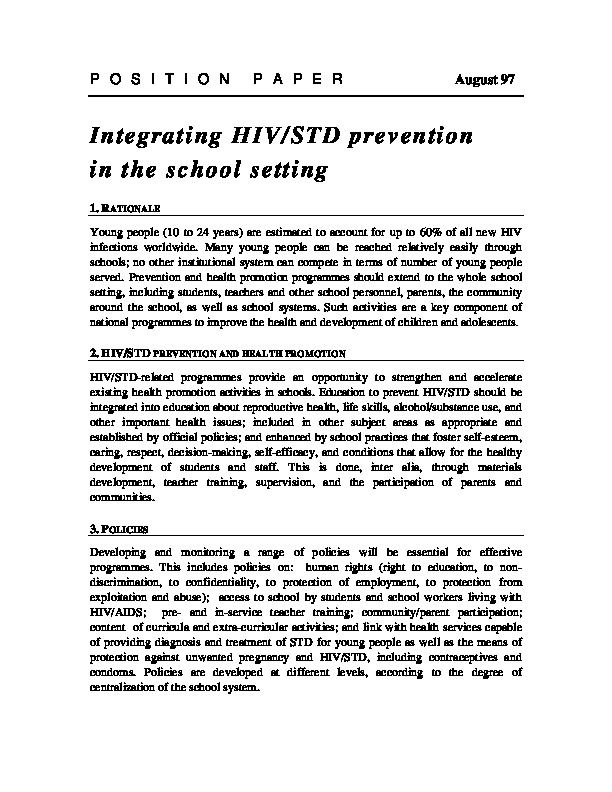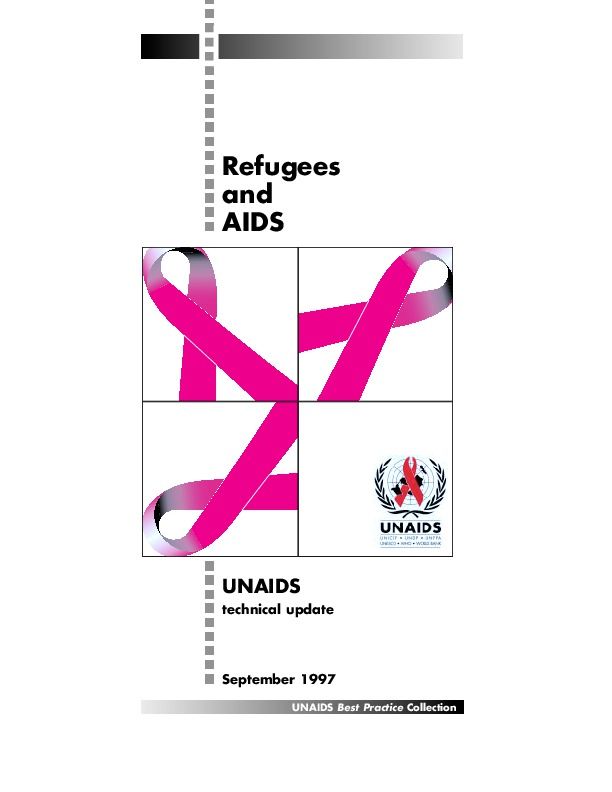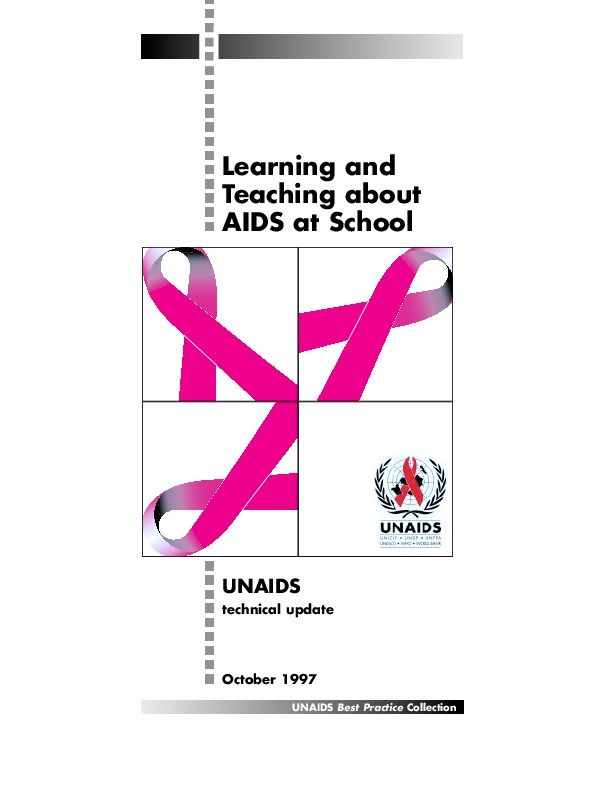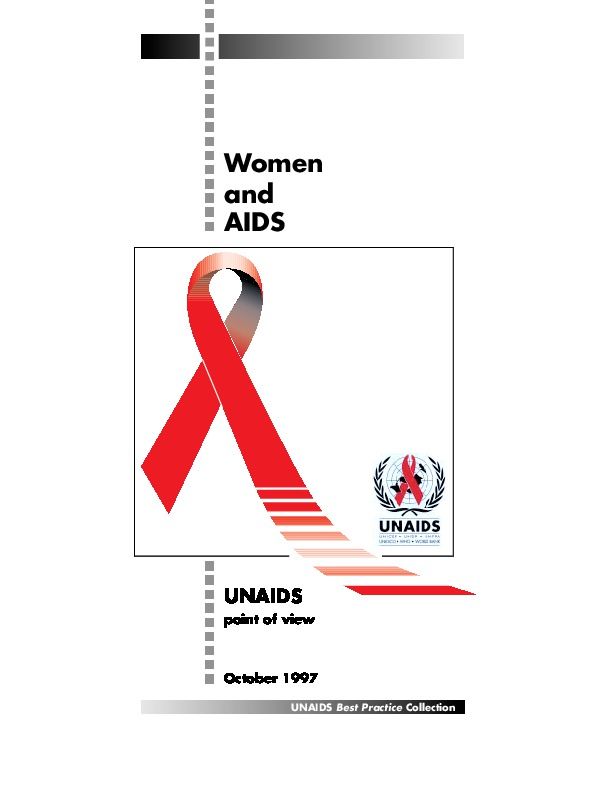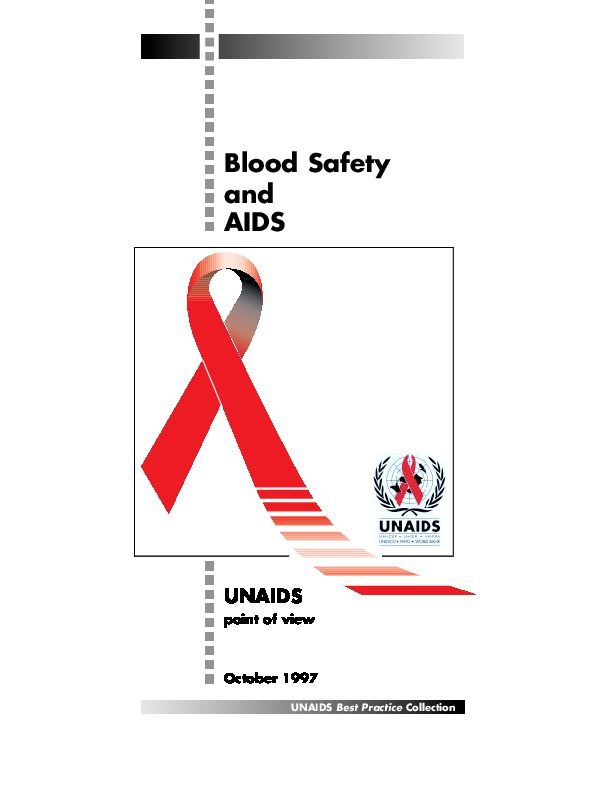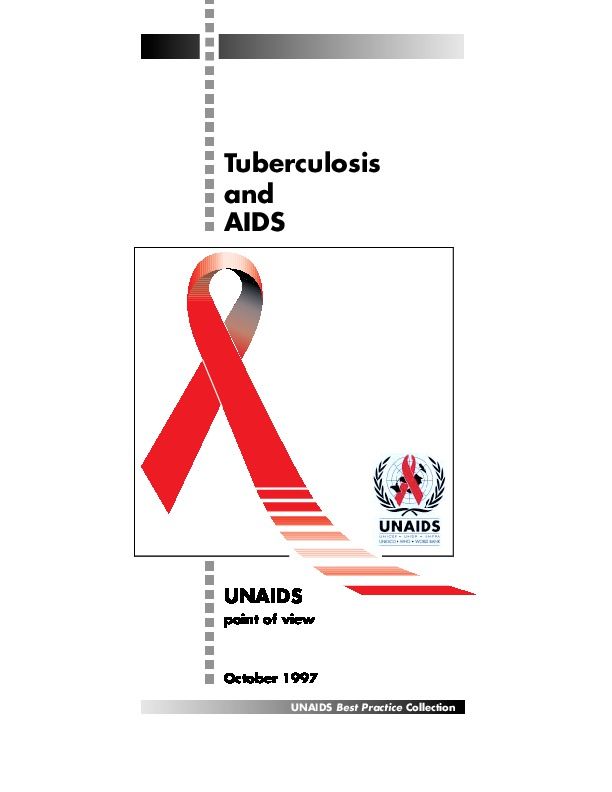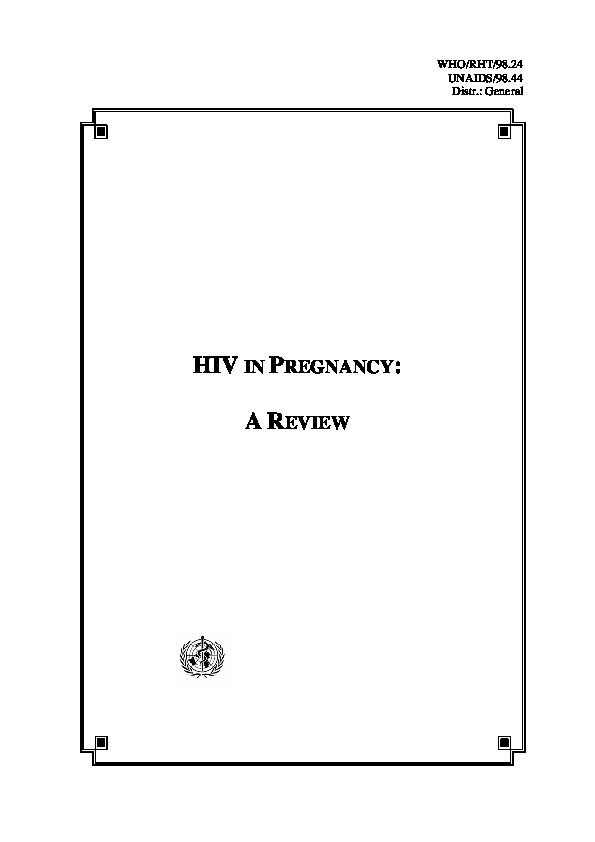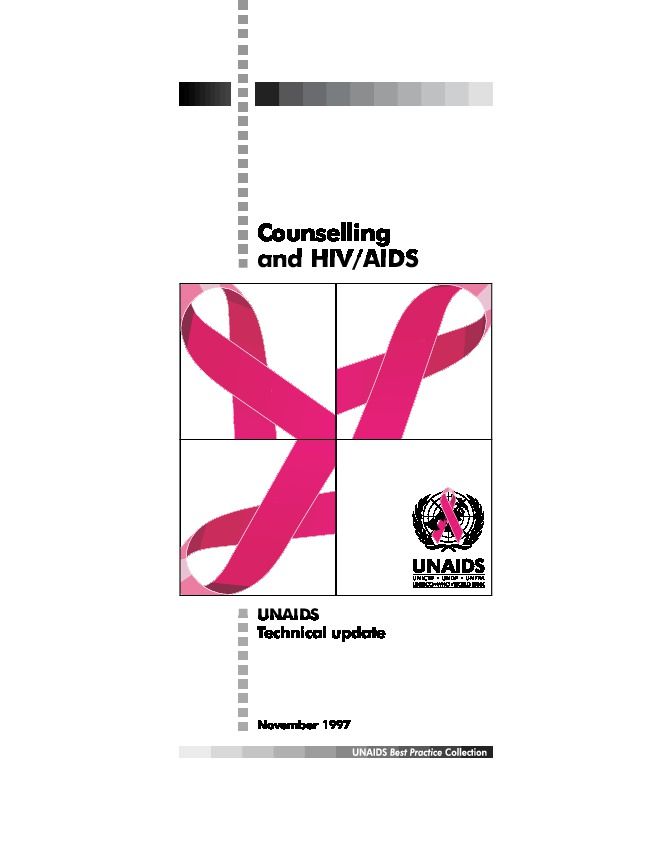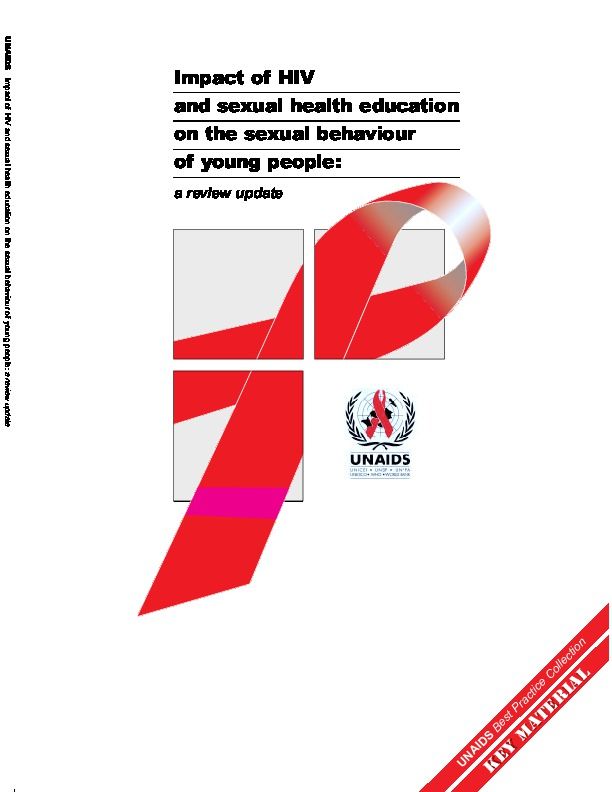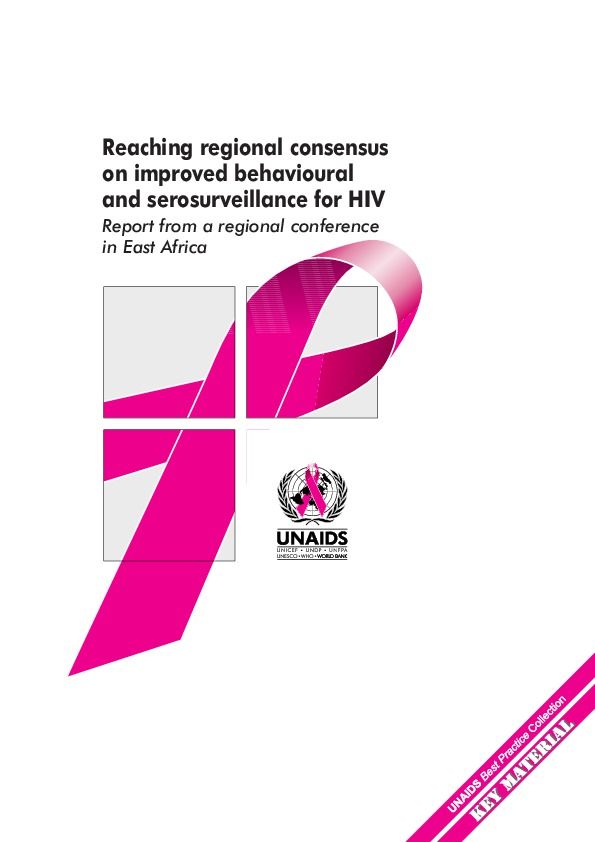Documents
Integrating HIV/STD prevention in the school setting
01 August 1997
Young people (10 to 24 years) are estimated to account for up to 60% of all new HIV infections worldwide. Many young people can be reached relatively easily through schools; no other institutional system can compete in terms of number of young people served. Prevention and health promotion programmes should extend to the whole school setting, including students, teachers and other school personnel, parents, the community around the school, as well as school systems. Such activities are a key component of national programmes to improve the health and development of children and adolescents.
Documents
Refugees and AIDS: UNAIDS Technical update
24 November 1997
Documents
Learning and teaching about AIDS at school
24 November 1997
Young people are especially vulnerable to HIV and other sexually transmitted diseases (STDs). They are also vulnerable as regards drug use (and not just injected drugs). Even if they are not engaging in risk behaviors today, they may soon be exposed to situations that put them at risk. Very often they cannot talk easily or at all about AIDS, or about the risk behaviors that can lead to HIV infection, at home or in their community. However, most of them do attend school at some point, and school is an entry point where these topics – often difficult to discuss elsewhere - can be addressed.
Documents
Women and AIDS
24 November 1997
Women continue to make strides towards equality with men. Wherever they are educated, able to generate income, and enjoy equal protection under the law, they are in a position to have some control over their economic, social and personal life. Yet for millions of women, these goals are still remote. These are the women who are the most vulnerable to infection with HIV, the virus that results in AIDS.
Documents
Tuberculosis and AIDS
25 November 1997
The growing epidemic of human immunodeficiency virus (HIV) has breathed new life into an old enemy – tuberculosis. The HIV epidemic spurs the spread of TB and increases the tuberculosis risk for the whole population. For those who are HIV-positive, the TB risk is especially great and the outcome often fatal.
Documents
HIV in Pregnancy : a review
01 January 1998
The first section of the review consists of a summary of what is known about HIV in pregnancy, transmission of HIV from mother-to-child, and interventions to prevent transmission. The second part of the review provides some suggestions on the appropriate management of HIV-positive women during pregnancy, delivery and postpartum, and the third section lists guidelines for infection control and safe working conditions with regard to HIV in pregnancy.
Documents
Counselling and HIV/AIDS
18 March 1998
HIV counselling has been proved effective in various ways. An evaluation of The AIDS Service Organisation (TASO) in Uganda has shown that it helps people accept and cope with the knowledge of being HIV-positive, and furthermore encourages acceptance from families and communities. A Rwandan study has proved that HIV counselling can help people make decisions about HIV testing, as well as reduce HIV transmission. Yet there is a reluctance among some policy-makers and service managers to give counselling its proper due as a discipline in which trained practitioners can produce measurable, useful results. For this reason it is under-resourced and not fully appreciated.
Documents
Impact of HIV and sexual health education on the sexual behaviour of young people: a review update
21 April 1998
Documents
Reaching regional consensus on improved behavioural and sero-surveillance for HIV Report from a regional conference in East Africa
30 May 1998
This report documents a regional workshop on surveillance systems for HIV held in Nairobi, Kenya, on 10-13 February 1997. The UNAIDS-funded workshop gathered government epidemiologists, AIDS programme managers, and social scientists from Kenya, Malawi, Swaziland, Tanzania, Uganda, Zambia and Zimbabwe as well as specialists from UNAIDS and other partner institutions. The group aimed to present current data and to work together to suggest practical guidelines for improving HIV surveillance systems in a maturing epidemic.

